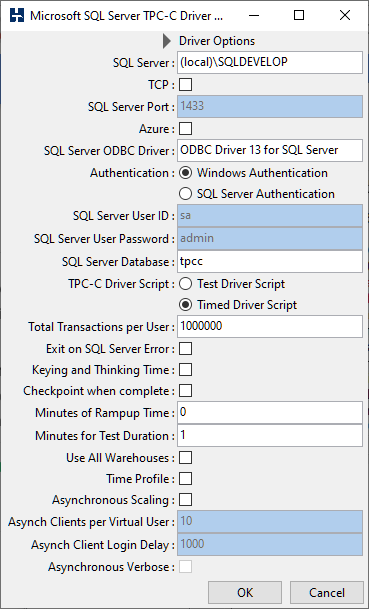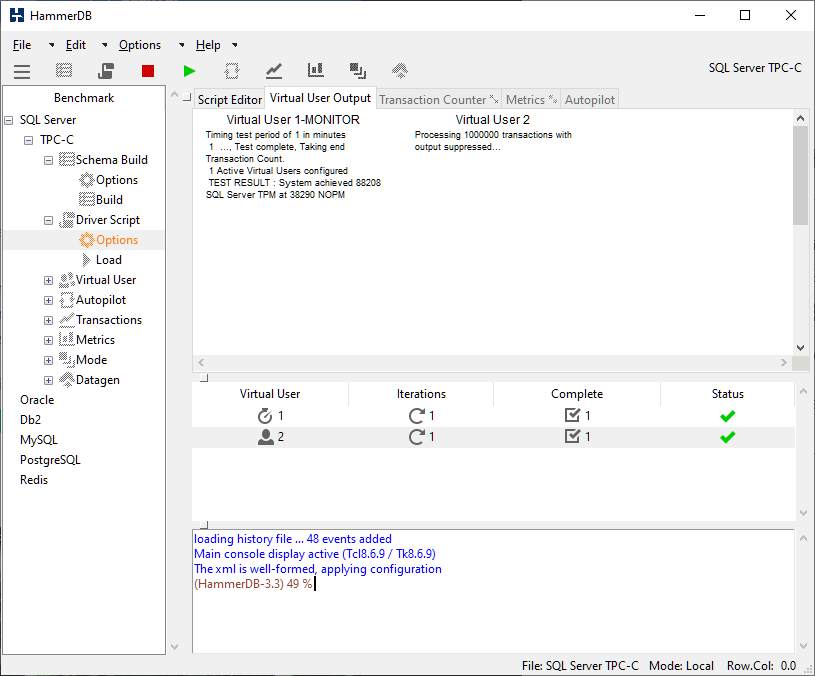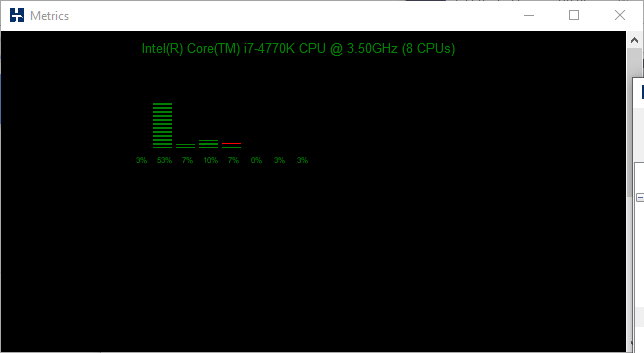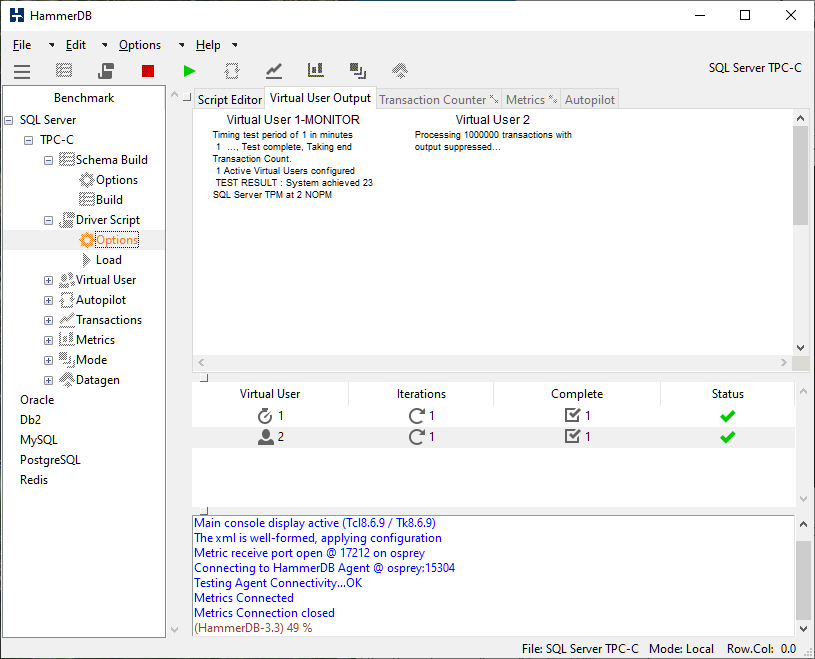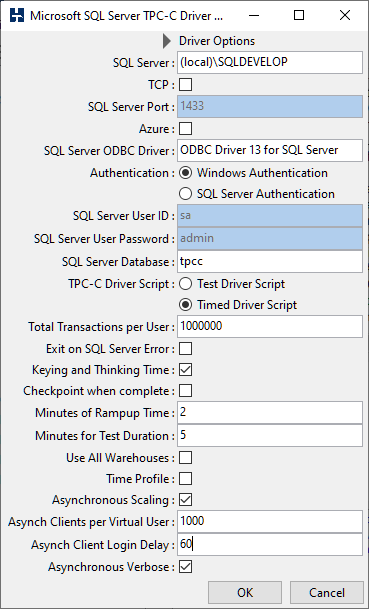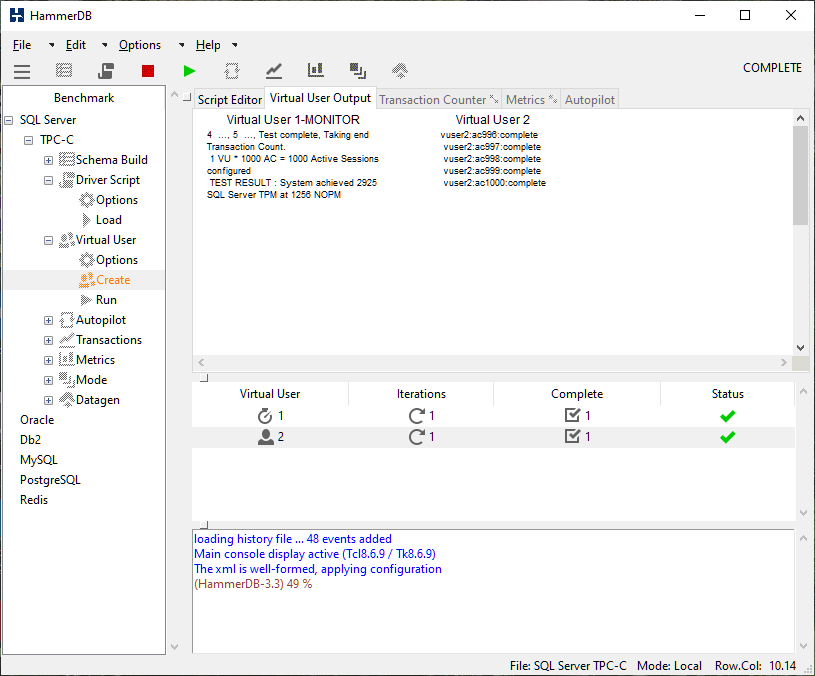HammerDB v3.3 includes a new feature called event driven scaling to enable the scaling of virtual users to thousands of sessions running with keying and thinking time enabled. This feature adds additional benefit to your testing scenarios with the ability to handle large numbers of connections or testing with connection pooling. This post explains the benefits that this feature brings and how to enable it.
When running transactional workloads with HammerDB the default mode is CPU intensive meaning that one virtual user will run as many transactions as possible. As an example we will run a simple test by creating a 10 warehouse TPC-C schema and configuring a single virtual user to run a test in this default mode.
Once we’ve created this Virtual User and run the test for 1 minute on a simple PC configuration we receive a result showing that the Virtual User ran many thousands of transactions a minute.
Using HammerDB metrics we can also see that this single Virtual User was using a fair amount of CPU.
Now lets select keying and thinking time by checking the “Keying and Thinking Time” option we can now see that the transaction rate has dropped considerably.
It is clear that we would need to create a large number of Virtual Users to even begin approaching the same number of transactions that a single virtual user could process without keying and thinking time. Event driven scaling is a feature that enables each Virtual User to create multiple database sessions and manage the keying and thinking time for each asynchronously in an event-driven loop enabling HammerDB to create a much larger session count. It should be clear that this feature is only designed to work with keying and thinking time enabled as it is only the keying and thinking time that is managed asynchronously.
To configure this feature we now select Asynchronous Scaling noting that Keying and Thinking Time is automatically selected. We have also selected a 1000 clients for our one Virtual User and a Login Delay of 60ms. This means that each client will wait for 60ms after the previous client has logged in before then logging in itself. Finally we have chosen verbose output. Note that with this feature it is important to allow the clients enough time to both login fully before measuring performance and also at the end it will take additional time for the clients to all complete their current keying and thinking time and to exit before the virtual user reports all clients as complete.
We now create a single virtual user as before. However this time once all the clients have connected we now see that there are the 1000 asynchronous clients connected to the test database.
SELECT DB_NAME(dbid) as DBName, COUNT(dbid) as NumberOfConnections FROM sys.sysprocesses WHERE dbid > 0 GROUP BY dbid;
| DBName | NumberOfConnections |
| master | 43 |
| tempdb | 1 |
| tpcc | 1003 |
When the workload has completed (noting as before that additional time must be given to allow all of the asynchronous clients to complete their work and log off) we can see that HammerDB reports the active sessions based on the asynchronous client count and the transaction rate for the single virtual user is considerably higher with keying and thinking time.
The event driven scaling feature is not intended to replace the default CPU intensive mode of testing and it is expected that this will continue to be the most popular methodology. Instead being able to increase up client sessions with keying and thinking time adds additional test scenarios for highly scalable systems.


